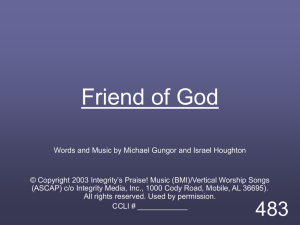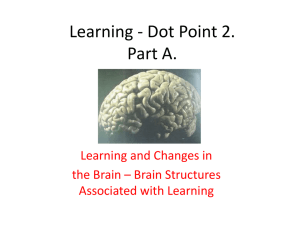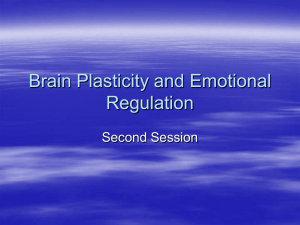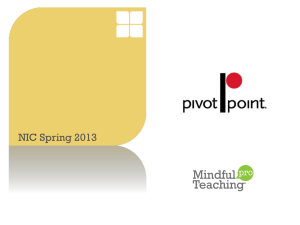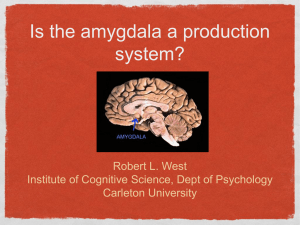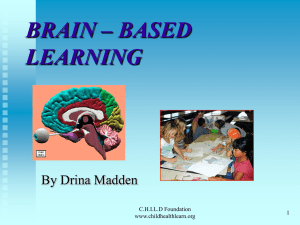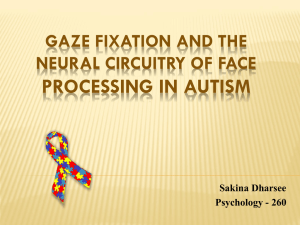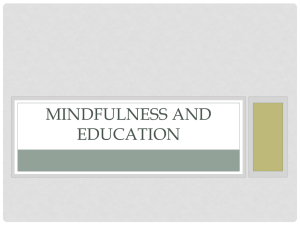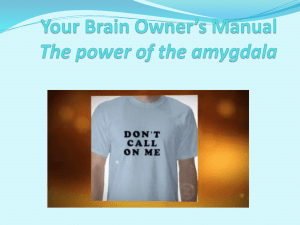MIND UP
advertisement
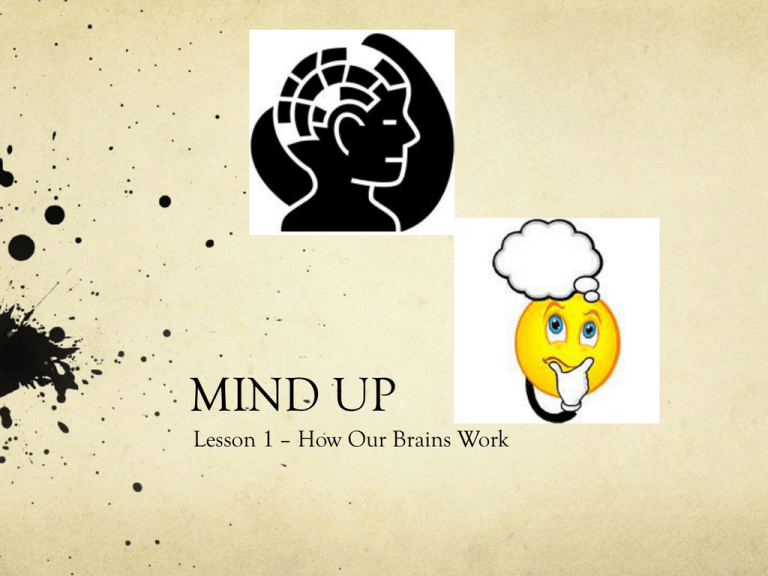
MIND UP Lesson 1 – How Our Brains Work Lesson 1 Burning Questions Write 2 or 3 ‘W’ or ‘H’ questions on post it note Write only 1 question on each post it note When you are done, stick the question on the appropriate big chart paper Meet some key players in the Brain P A H My Brain is like a… Brain Power Finish the brain Power worksheet You might: Read the poster Research for internet Watch the video, etc. http://www.youtube.com/watch?v=XSzsI5aGcK4 http://www.youtube.com/watch?v=NgOzYYwA1DI http://www.youtube.com/watch?v=xNY0AAUtH3g http://www.youtube.com/watch?v=5_vT_mnKomY http://www.youtube.com/watch?v=dyflxTtYMmc How people acquire different skills Mind Skills Discussion What kind of skill drills could you invent that would help you be creative of help you concentrate? Team Brain Engage Parts of the brain operate like a team, each part with a position and job to do. Prefrontal cortex (thinking) Amygdalae (emotions) Hippocampus (memories) Team Brain Explore A football Team Prefrontal cortex - quarter back Amygdala – blocker Hippocampus – coach Team Brain Reflect Refill your worksheet (Brain Power) Imagine you are walking to school and you see ahead of you, blocking the side walk, a large group of bigger kids you don’t know. How does your body immediately react? What are you thinking? Whet experience can you draw on? Team Brain Reflect What does your brain’s quarterback (the prefrontal cortex) do? What does your brain’s blocker (the amygdala) do? What does your brain’s coach (the hippocampus) do? Career Connection Find out as many word as you can that starts with “Neuro” If you could choose one job with the prefix neuro- or brain in the job title, what would it be and why? Action Once a Day Pick a specific time to stop and self-assess: Do your responses reveal the involvement of your amygdala (reaction) or your PFC (reflection)? If your amygdala is being activated, what is triggering its response? What would you like to change about your style reaction? Journal Writing Choose at least one of the following to response in your journal: Draw a cartoon of the usual mode of action your own amygdala. Below your picture, describe how your amygdala most often reacts to danger. Is your amygdala more like a runner, a statue, or a fighter? Try a before-and-after experiment. Describe how your PFC is working right now. Then use your hippocampus to focus on an especially happy memory. Do you notice any effect on your PFC’s functioning? Do you feel calmer? Is your thinking clearer? Journal Writing Choose at least one of the following to response in your journal: Imagine that your amygdala is overreacting. There really is no danger. Write a conversation among your PFC, amygdala, and hippocampus. What would they say to each other? Write about a time when you helped someone calm down. Think about the kinds of things you did and said. What worked best? What did’t work at all? Social-emotional learning Write down two situations that might prompt your amygdala to signal danger – one situation in which the danger is real and one in which it is not. Fold up the strips and put them in a paper bag. Pick up a strip at random What is the worst thing that could happen? What is the best thing that could happen? What is most likely to happen? How is our responses related to the roles of the amygdala, PFC, and hippocampus. Lesson 2 Mindful Awareness Attending to the here and now – other people, the environment, a concern or challenge – in a considerate, nonjudgmental ways is called mindful awareness. It is a skill that can be developed by paying close attention to our present situation and our role in it. A mindfulness students make sound decisions rather than ruled by their emotions. A mindfulness students is a self-aware, self-controlled and compassionate person. Hand Model Please raise you hand and fold your thumb inside your hand. The tip of your thumb is your amygdala and the rest of your thumb is the hippocampus. Fold your finger over the top of your thumb to form a fist. When we get very angry, stressed out or overly anxious, the amygdala kicks off and hits the fingers to open the fist. This is when our “head flips”. Awareness Test 1 Awareness Test 2 Awareness Test (2) http://www.youtube.com/watch?v=Ahg6qcgoay4 Mindful or Unmindful Glue your mindful or unmindful worksheet to your LPD journal Add at least two more pairs of mindful or unmindful examples to your LPD journal The Amygdala & Mindful Awareness The Amygdala & Mindful Awareness Mindful thinking results when the prefrontal cortex is allowed to process sensory information that arrives at the amygdala. For example: “counting to ten” when you’re frustrated or angry. Counting gives the amygdala time to allow the input to move on to the prefrontal cortex and be analyzed more accurately. Journal Writing Choose at least one of the following to response in your journal: Write an acrostic for MINDFUL, using each letter in the word to make a statement about being mindful with a word that has the same initial letter. You might use a repeating pattern, such as: M is for stating in the moment, I is for … Being unmindful can be bad for your health. Draw a picture of someone being unmindful in a risky way. Write a caption that describes what the person is doing and why it is dangerous. Journal Writing Choose at least one of the following to response in your journal: Write a letter to someone, apologizing for a time when you were unmindful. Explain how you plan to be more mindful in the future. Imagine your mindful attention taking the form of a bull’s eye. Whatever is in the center is what you are most mindful of. Use words and images in the rings to represent your attention on most days.


